 "ttyymmnn" (ttyymmnn)
"ttyymmnn" (ttyymmnn)
10/09/2018 at 12:35 • Filed to: wingspan, Planelopnik, TDIAH
 5
5
 30
30
 "ttyymmnn" (ttyymmnn)
"ttyymmnn" (ttyymmnn)
10/09/2018 at 12:35 • Filed to: wingspan, Planelopnik, TDIAH |  5 5
|  30 30 |
!!! UNKNOWN CONTENT TYPE !!!
Welcome to
This Date in Aviation History
, getting of you caught up on milestones, important historical events and people in aviation from October 6 through October 9.
!!! UNKNOWN CONTENT TYPE !!!
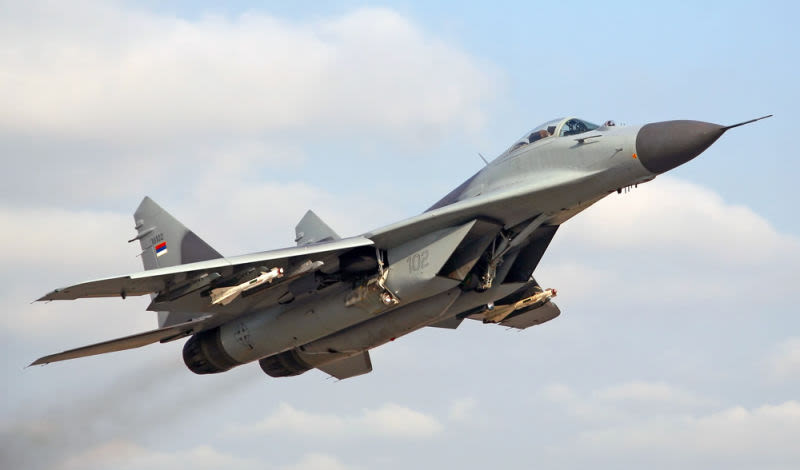 !!!CAPTION ERROR: MAY BE MULTI-LINE OR CONTAIN LINK!!!
!!!CAPTION ERROR: MAY BE MULTI-LINE OR CONTAIN LINK!!!
October 6, 1977 – The first flight of the Mikoyan Gurevich MiG-29. During the Vietnam War, the US Air Force discovered that using high speed fighter aircraft in the ground attack role left them vulnerable to attack from above. Air superiority became the watchword, as the US sought to hold control of the airspace over the battlefield in the same way they had late in WWII, and again during the Korean War. In the 1960s, the Air Force began its F-X program to develop a new air superiority fighter, a competition which brought about the superb !!!error: Indecipherable SUB-paragraph formatting!!! , which was awarded a production contract in 1969 based on a technical proposal and took its maiden flight in July 1972. But the arms race being what it was, and still is, the Soviet Union had to respond to the threat posed by this new high-performance American fighter, and they began their own program in 1969 to produce a new frontline air superiority fighter to counter the Eagle.
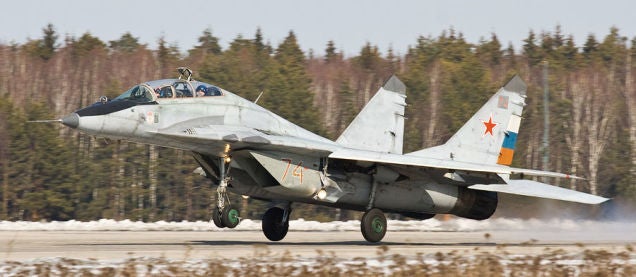 !!!CAPTION ERROR: MAY BE MULTI-LINE OR CONTAIN LINK!!!
!!!CAPTION ERROR: MAY BE MULTI-LINE OR CONTAIN LINK!!!
Dubbed Perspektivnyy Frontovoy Istrebitel ( PFI , or Advanced Frontline Fighter ), the program called for an agile, long-range fighter with Mach 2+ speed and the ability to operate from rough or unimproved airstrips. But as development progressed, the Russians found themselves in a similar situation as the Americans, needing both a heavy air superiority fighter and a lighter multi-role fighter. Thus, the MiG-29 became roughly analogous to the !!!error: Indecipherable SUB-paragraph formatting!!! , while the larger and heavier !!!error: Indecipherable SUB-paragraph formatting!!! took on the role of the heavy fighter. The MiG-29 is powered by a pair of !!!error: Indecipherable SUB-paragraph formatting!!! afterburning turbofans spaced far enough apart that the area between them produces additional lift. Air intake flaps are fitted that prevent the ingestion of foreign object debris during landing and takeoff from unpaved airstrips. The MiG-29 is armed with a single 30mm cannon in the wing root, and is also fitted with a laser rangefinder and !!!error: Indecipherable SUB-paragraph formatting!!! (IRST) system housed in an eyeball-like bubble forward of the cockpit. This system allows the pilot to track targets that emit infrared radiation while not giving off any energy of its own, making it difficult for the target aircraft to know they are being tracked. Numerous missiles, rockets, and bombs can also be fitted to its six underwing hard points.
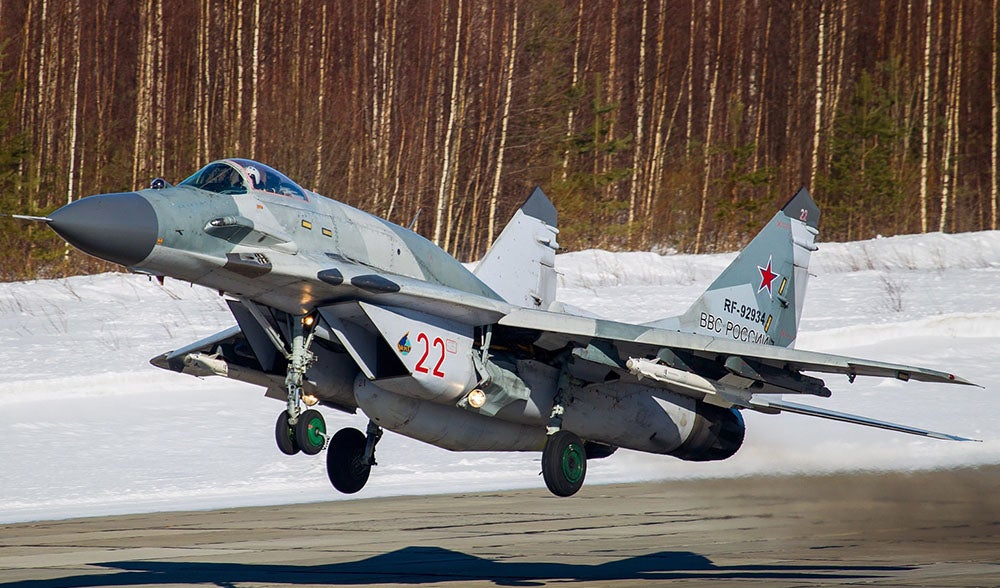 !!!CAPTION ERROR: MAY BE MULTI-LINE OR CONTAIN LINK!!!
!!!CAPTION ERROR: MAY BE MULTI-LINE OR CONTAIN LINK!!!
The MiG-29 entered service with the Soviet frontline forces in 1982 and was given the NATO designation Fulcrum. By the mid-1980s, the MiG-29 began appearing at international air shows, but the capabilities of the Fulcrum remained a mystery to the West until analysts and pilots were able to fly a number of them following the reunification of Germany in 1990. In 1997, the US bought Moldova’s stock of 21 MiG-29s to prevent their sale to Iran or other rogue states, and the purchase had the added benefit of providing an opportunity to train head to head against the Fulcrum. Western analysts found the Fulcrum to be a capable dogfighter, notable for its helmet-mounted sight that could target an air-to-air missile while the aircraft’s nose was pointed in another direction. But it also had a relatively short range and a somewhat primitive cockpit that limited the pilot’s situational awareness of the battle space. Like most Russian warplanes, the Fulcrum has been continuously updated throughout its service life and exists in a myriad of variants, including two-seat training variants, an export version, a carrier-capable variant, as well as a substantially modernized !!!error: Indecipherable SUB-paragraph formatting!!! variant. Over 1,600 aircraft have been produced, and the MiG-29 continues to serve the air forces of 26 nations.
!!! UNKNOWN CONTENT TYPE !!!
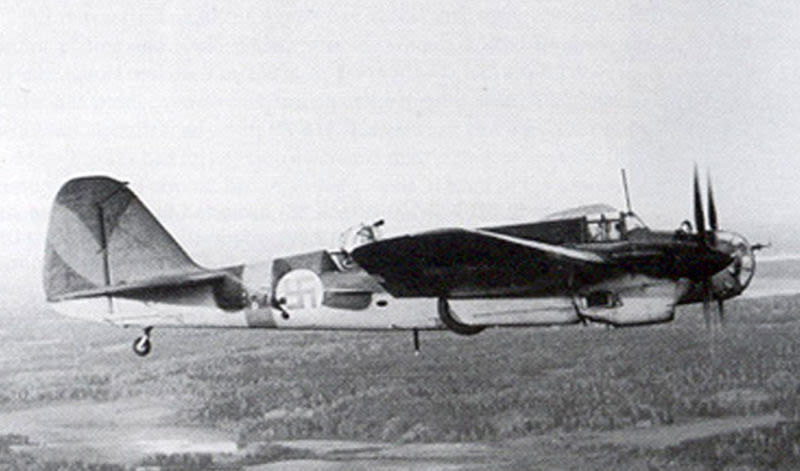
Tupolev SB in Finnish markings (Author unknown)
October 7, 1934 – The first flight of the Tupolev ANT-40 / SB. Prior to the start of WWII, the design of bomber aircraft began to separate into two general trends. The first was large, heavy bombers capable of flying long distances with large bomb loads. These bombers packed a punch, but they weren’t particularly fast, and were vulnerable to interception by enemy fighters. The second was the development of medium-sized, twin-engine bombers that carried fewer bombs but used their higher speeds as protection from enemy fighters. In 1933, the Soviet Air Force ministry issued a requirement for a new high speed bomber designated Skorostnoi Bombardirovschik (SB) and work on the new aircraft began at the Tupolev design bureau at the Central Aerodynamic Institute ( !!!error: Indecipherable SUB-paragraph formatting!!! ). Beginning in the early 1930s, aircraft designers moved away from fabric-covered wooden frameworks to !!!error: Indecipherable SUB-paragraph formatting!!! aircraft, an arrangement where the aircraft’s metal skin helps to keep the aircraft’s box frame rigid.
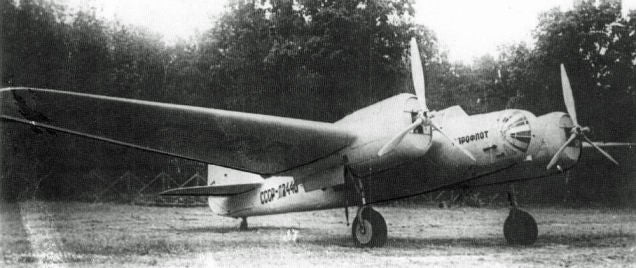
Tupolev ANT-40RT in Aeroflot livery (Author unknown)
Tupolev’s prototype bomber, known as the ANT-40, was the first modern stressed skin aircraft produced by the Russians in large numbers, and was initially created two versions. The first, known as the ANT-40RT, was powered by a pair of !!!error: Indecipherable SUB-paragraph formatting!!! engines and was the first to fly. The second, known as the ANT-40IS, was powered by two Spanish-made !!!error: Indecipherable SUB-paragraph formatting!!! liquid cooled V-12 engines. The bomber had a crew of three and a top speed of 280 mph, could carry up to 2,200 pounds of bombs, and was armed with four defensive machine guns. The ANT-40IS served as the production prototype for the Skorostnoi Bombardirovschik , but the first SBs started rolling off the production line before the testing program had even completed. As a result, the assembly lines faced numerous difficulties because of constant modifications to the production process. Many pilots and maintenance personnel were upset with the early shortcomings of the SB and, when the Russian Commissar for Heavy Industry, Sergo Ordzhonikidze, came for an inspection, the crews covered their aircraft with placards complaining about the problems. !!!error: Indecipherable SUB-paragraph formatting!!! was summoned for an audience with Soviet leader !!!error: Indecipherable SUB-paragraph formatting!!! , where he told the Russian leader that most of the defects were trivial. Stalin replied, “There are no trivialities in aviation; everything is serious and any uncorrected triviality could lead to the loss of an aircraft and its crew.”
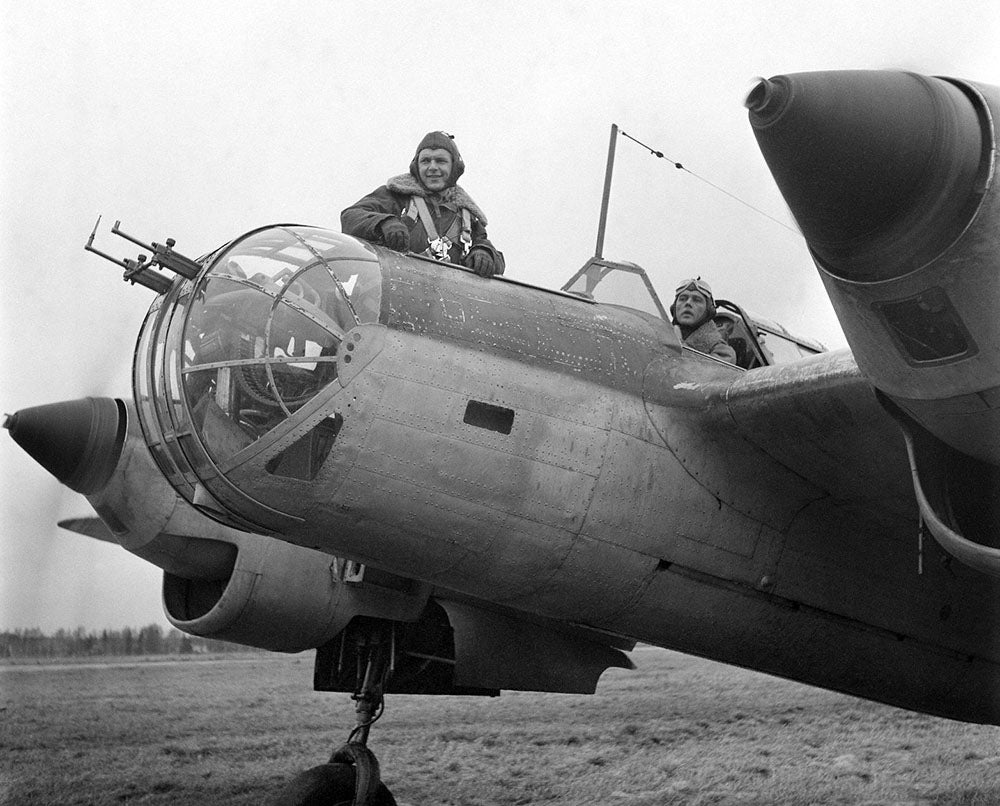 !!!CAPTION ERROR: MAY BE MULTI-LINE OR CONTAIN LINK!!!
!!!CAPTION ERROR: MAY BE MULTI-LINE OR CONTAIN LINK!!!
As production of the SB continued, refinements and improvements slowly made their way into the fleet, and the SB first saw action with the Spanish Republicans during the !!!error: Indecipherable SUB-paragraph formatting!!! in 1936. There, the SB proved to be faster than contemporary fighters, and significantly faster than the older biplane fighters it faced. The SB also saw service in China, Mongolia, Finland, and some captured aircraft were flown against the Russians by the German Luftwaffe and Finnish Air Force. Despite its speed, the rapid pace of fighter development rendered the SB obsolete by 1941, and the remaining aircraft were used as transports and cargo aircraft. A total of 6,656 SBs were produced between 1936 and 1941, making it one of the most numerous aircraft of its day.
!!! UNKNOWN CONTENT TYPE !!!
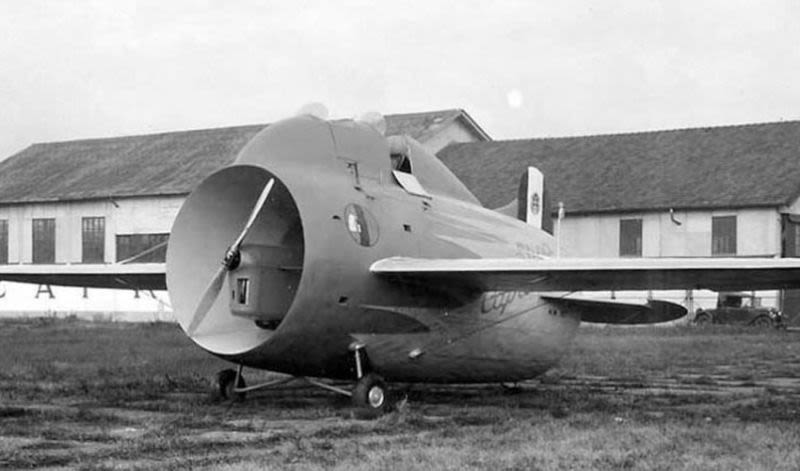
(Author unknown)
October 7, 1932 – The first flight of the Stipa-Caproni. The decades of the 1920s-1930s are known as the !!!error: Indecipherable SUB-paragraph formatting!!! , an era marked by an explosion in the popularity of flying as well as rapid technological advancement. While many designers worked to refine more traditional aircraft, others took the opportunity to experiment with radical aircraft of entirely new design. Some of those innovative aircraft were developed into successful production designs, while others, though ultimately unsuccessful, paved the way for aircraft of the future.

The engine at the front of the tubular fuselage of the Stipa-Caproni (Author unknown)
One of the more exotic ideas to come out of this period was the Stipa-Caproni, also known by the reverse name Caproni Stipa. Created by Italian engineer !!!error: Indecipherable SUB-paragraph formatting!!! and built by manufacturer !!!error: Indecipherable SUB-paragraph formatting!!! , the barrel-like fuselage was a tapered airfoil shape which created a !!!error: Indecipherable SUB-paragraph formatting!!! that compressed the air moved by the propeller and sped it up, putting into practice the principles of fluid dynamics first described by !!!error: Indecipherable SUB-paragraph formatting!!! in 1738. Stipa called his invention an intubed propeller , and he rigorously calculated the shape of both the tube and the propeller, as well as the speed of the propeller, for optimal efficiency. The aircraft’s elliptical wing passed through the oversized fuselage behind the propeller, and the rudder and elevators were mounted directly behind the tubular fuselage to benefit from the passage of air through the fuselage. Two pilots sat in tandem high atop the aircraft.
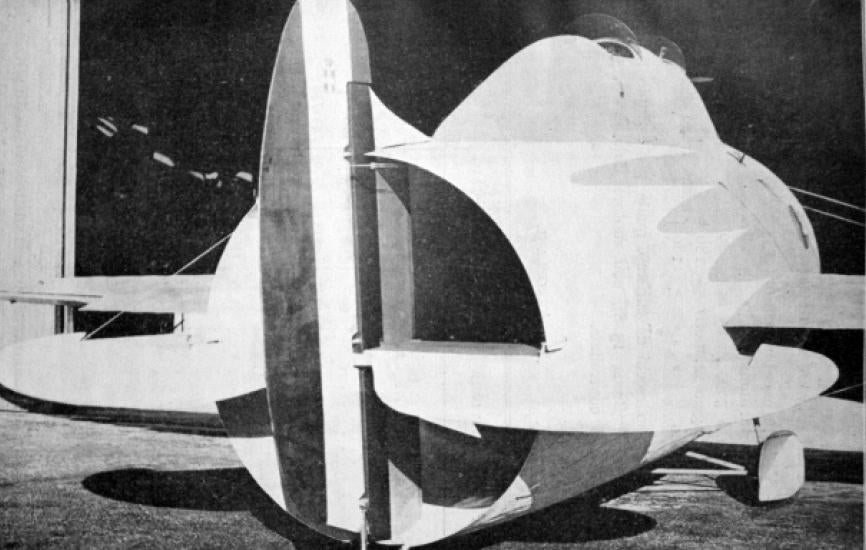
The vertical and horizontal stabilizers mounted at the rear of the fuselage tube allow air from the engine to flow over the control surfaces. (Author unknown)
In 1932, Stipa convinced the Italian government to fund the construction of his unorthodox airplane. Test pilots found that the aircraft was extremely stable, almost to the point of being difficult to turn. And the fact that the entire aircraft helped generate lift meant that extremely slow landing speeds were possible. Despite promising test results, the Stipa-Caproni failed to outperform contemporary aircraft, and the project was canceled. However, Stipa’s work was quite influential and widely studied, and some consider his intubed propeller, which is essentially a
!!!error: Indecipherable SUB-paragraph formatting!!!
, as the precursor to the modern
!!!error: Indecipherable SUB-paragraph formatting!!!
engine.
!!! UNKNOWN CONTENT TYPE !!!

(US Air Force)
October 9, 1999 – The final flight of the Lockheed SR-71 Blackbird. Before the advent of reliable reconnaissance satellites, it was up to aircraft to perform the often dangerous job of spying on the enemy. But postwar reconnaissance aircraft, often not the fastest aircraft available, were vulnerable to fighters, and a number of American spy planes were shot down as they probed the borders of the Soviet Union. The high-flying !!!error: Indecipherable SUB-paragraph formatting!!! , which could reach altitudes beyond the reach of fighters, removed much of the danger, but it remained vulnerable to anti-aircraft missiles. In 1957, Lockheed began investigating an aircraft that could take over the job of spying on the Soviet Union from the vulnerable U-2. This task became more urgent in 1960 when a U-2 flown by !!!error: Indecipherable SUB-paragraph formatting!!! was !!!error: Indecipherable SUB-paragraph formatting!!! by a surface-to-air missile over the Soviet Union while photographing nuclear missile sites. Lockheed’s goal was to create a plane that was untouchable by any fighter or missile in existence. In addition to making a plane that flew still higher and faster, Lockheed also experimented with technologies that reduced the aircraft’s radar signature and was the precursor to what we know as !!!error: Indecipherable SUB-paragraph formatting!!! today.
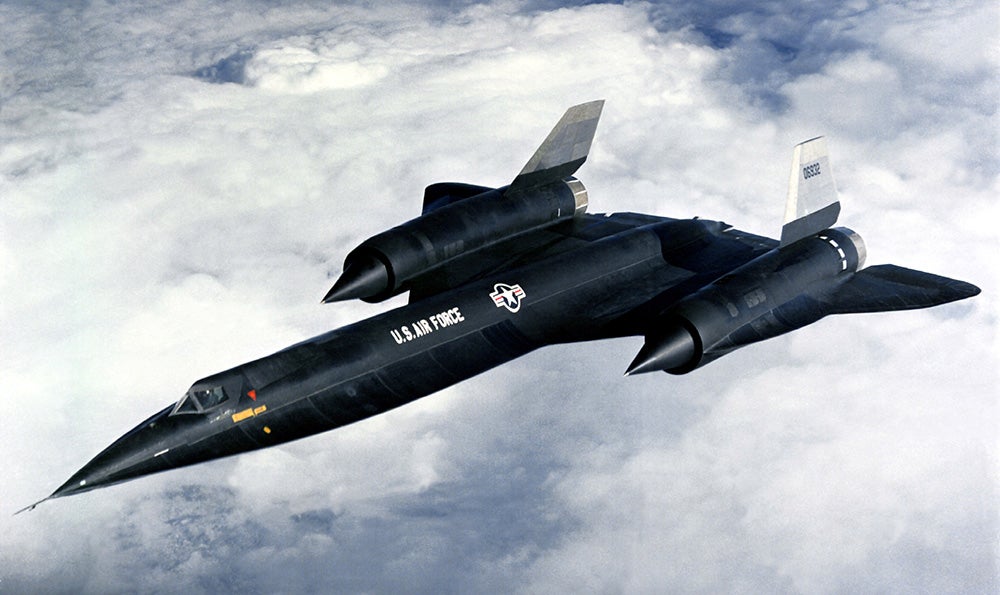
The Lockheed A-12, which formed the basis for the SR-71 Blackbird (US Air Force)
The result of Lockheed’s work led to the single-seat !!!error: Indecipherable SUB-paragraph formatting!!! , which first flew in 1962. The A-12 was followed by the !!!error: Indecipherable SUB-paragraph formatting!!! , and though it was not as fast as the lighter A-12, its increased range and more advanced sensors made the Blackbird a more capable aircraft. The SR-71 also added a second crewmember to handle the reconnaissance work, allowing the pilot to concentrate on flying the plane. Powered by two !!!error: Indecipherable SUB-paragraph formatting!!! continuous bleed afterburning turbojets, the Blackbird was capable of speeds up to Mach 3.3 at 80,000 feet. It could not be shot down by the surface-to-air missiles of the day, and it was faster than any contemporary Soviet fighter. The Blackbird took its maiden flight on December 22, 1964 and entered service in 1968. Blackbirds based in Okinawa were soon flying as many as two missions a week over enemy territory, most often North Vietnam and Laos. Flying from European bases, Blackbirds probed the edges of the Soviet Union and provided intelligence during US military operations in Libya.
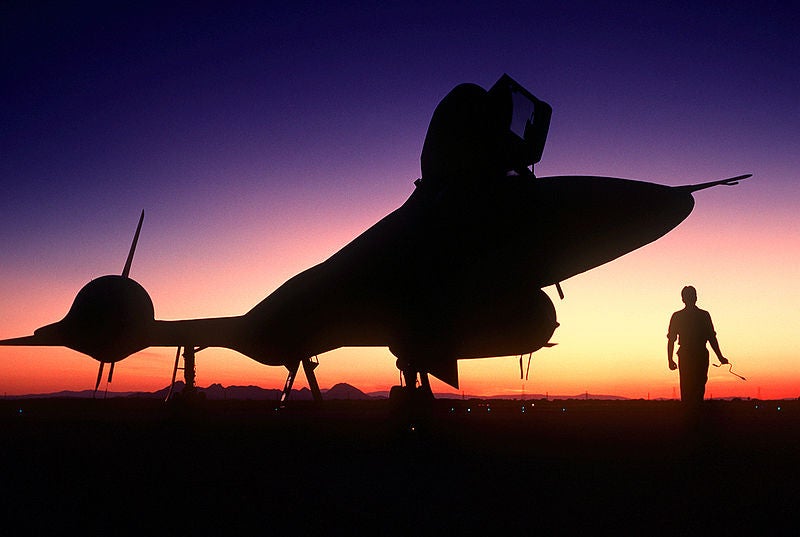
(Tech. Sgt. Michael Haggertym, US Air Force)
But along with the unsurpassed capabilities of the SR-71 came very high operating costs, and it became a political issue in an era of shrinking budgets and competition for funds. In 1989, the Blackbird was retired from service, even at a time of escalating tensions in the Middle East when it could have performed valuable reconnaissance in the upcoming !!!error: Indecipherable SUB-paragraph formatting!!! . When the US government realized that it still had a need for the high-flying spy plane, the SR-71 was updated with real-time data transmission capabilities and reactivated in 1993, despite stiff opposition from the US Air Force who said they didn’t have the funds to operate it. The Air Force also claimed that the Blackbird competed for funds with unmanned reconnaissance projects currently under development.
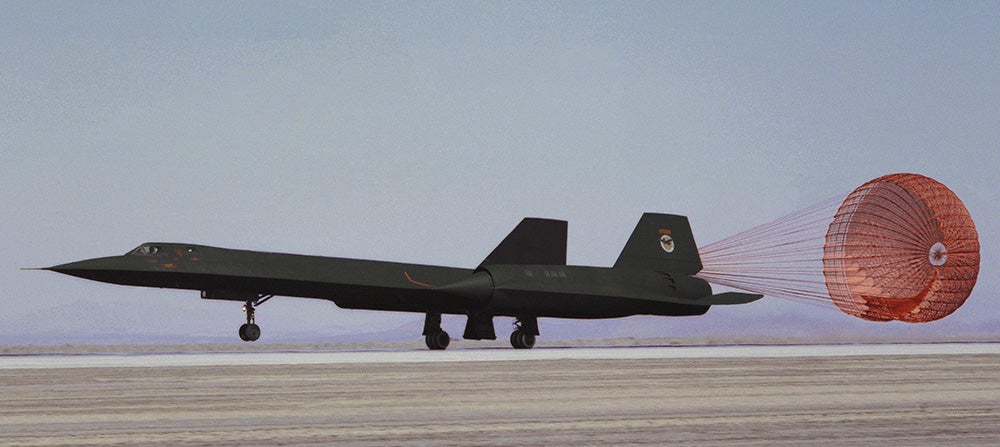
One of two initial US Air Force SR-71A Blackbirds that was retired from operational service and loaned to NASA for high-speed research programs deploys its drag chute as it arrives at NASA’s Dryden Flight Research Center in California. (NASA)
After another political battle over funding the aircraft, the SR-71 was permanently retired in 1998, and the last two airworthy Blackbirds were transferred to NASA for research. The book on the Blackbird was finally closed on October 9, 1999 when the last flying aircraft, an SR-71A (61-7980/NASA 844), landed at Edwards AFB in California and was placed in storage with the other NASA Blackbird. As of its official retirement, the Blackbird had logged 53,490 flight hours with only one pilot lost to an accident. None were lost to enemy fire. All remaining aircraft (as far we know) are now housed at aviation museums around the country.
!!! UNKNOWN CONTENT TYPE !!!
Short Takeoff
!!! UNKNOWN CONTENT TYPE !!!
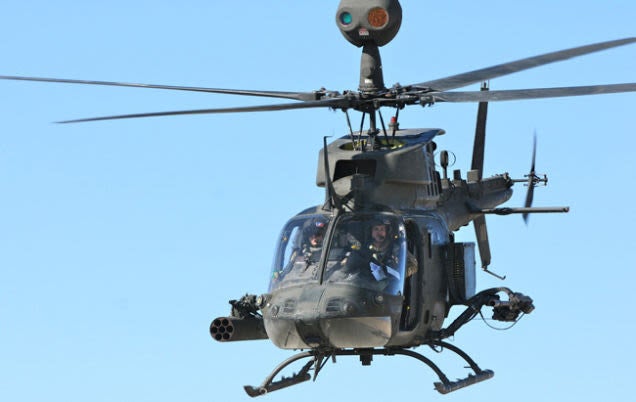
(US Army)
October 6, 1983 – The first flight of the Bell OH-58D Kiowa Warrior. The OH-58 Kiowa, a development of the !!!error: Indecipherable SUB-paragraph formatting!!! , entered service in 1969 in response to an Army requirement for a !!!error: Indecipherable SUB-paragraph formatting!!! (LOH). The OH-58D Kiowa Warrior variant was a product of the Advanced Helicopter Improvement Program (AHIP) which included improved radar for nap-of-the-earth flight, a quieter four-bladed rotor, and a mast-mounted sight (MMS) for locating targets from behind the cover of terrain. The OH-58D is fitted with pylons that can hold two !!!error: Indecipherable SUB-paragraph formatting!!! missiles, seven rockets, two air-to-air !!!error: Indecipherable SUB-paragraph formatting!!! missiles or one fixed .50 caliber machine gun.
!!! UNKNOWN CONTENT TYPE !!!
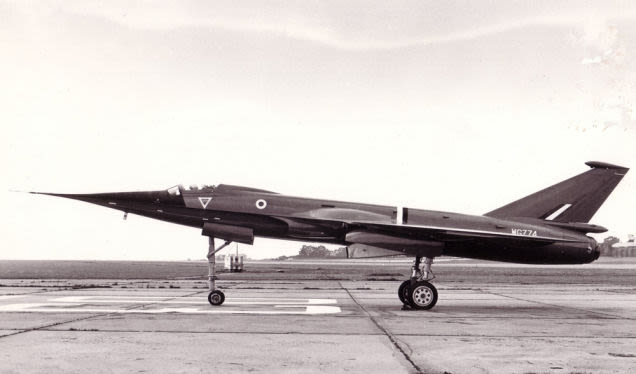
(Author unknown)
October 6, 1954 – The first flight of the Fairey Delta 2,
a British research aircraft that was developed to explore the regimes of transonic and supersonic flight. The Fairey Delta 2 was powered by a single
!!!error: Indecipherable SUB-paragraph formatting!!!
axial flow jet engine and was the first aircraft to exceed 1,000 mph, a world speed record that it held for more than a year before being surpassed by the
!!!error: Indecipherable SUB-paragraph formatting!!!
. The Delta 2 was also the first British aircraft to have all of its flight surfaces hydraulically controlled. Two prototypes were built, and one was significantly modified to become the BAC 221 which was used for high-speed delta wing testing in the development of the Concorde supersonic transport.
!!! UNKNOWN CONTENT TYPE !!!
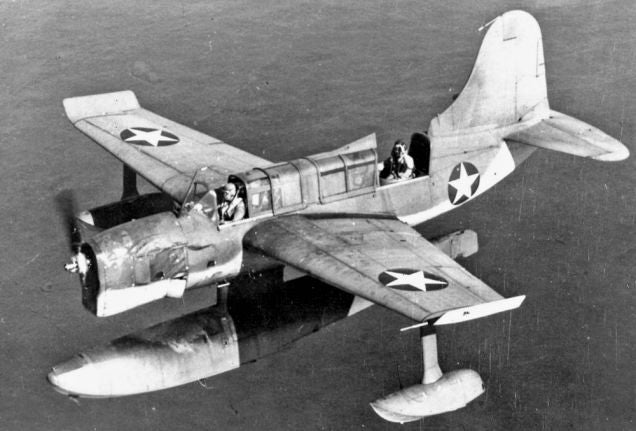
(US Navy)
October 6, 1939 – The first flight of the Curtiss SO3C Seamew,
a monoplane seaplane designed for the US Navy to replace the
!!!error: Indecipherable SUB-paragraph formatting!!!
. Per the US Navy requirement, the Seamew could be equipped with either a float or landing gear. To address stability problems, the wingtips were curved upward, and the vertical stabilizer extended across the observer’s cockpit. Due to unresolved problems with the
!!!error: Indecipherable SUB-paragraph formatting!!!
inline V-12 engine, the Seamew was withdrawn from frontline units in 1944 in favor of the older biplanes it was meant to replace. Nearly 800 were built, and it was retired in 1945.
!!! UNKNOWN CONTENT TYPE !!!
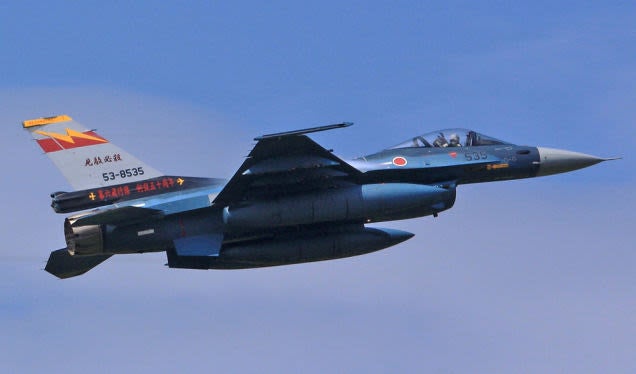 !!!CAPTION ERROR: MAY BE MULTI-LINE OR CONTAIN LINK!!!
!!!CAPTION ERROR: MAY BE MULTI-LINE OR CONTAIN LINK!!!
October 7, 1995 – The first flight of the Mitsubishi F-2, a fighter built in cooperation between !!!error: Indecipherable SUB-paragraph formatting!!! and !!!error: Indecipherable SUB-paragraph formatting!!! . Based on the !!!error: Indecipherable SUB-paragraph formatting!!! , the F-2 features a larger wing made of composite materials, larger tail plane, larger nose housing a more a powerful radar, a larger air intake and a three-piece canopy. Under the terms of the partnership, advances made in the F-2 were transferred back to Lockheed Martin for use in future US fighters. Produced from 1995-2011, 94 aircraft have been built and serve with the Japan Air Self-Defense Force.
!!! UNKNOWN CONTENT TYPE !!!
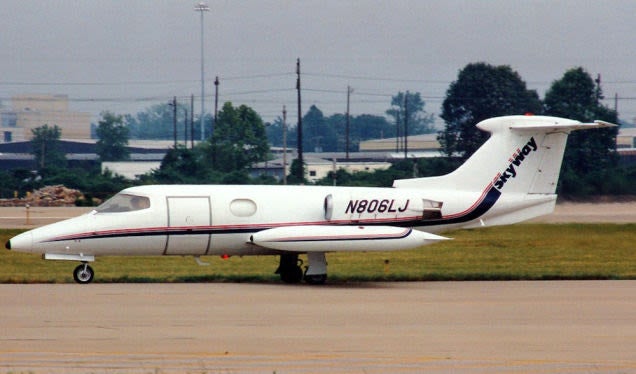 !!!CAPTION ERROR: MAY BE MULTI-LINE OR CONTAIN LINK!!!
!!!CAPTION ERROR: MAY BE MULTI-LINE OR CONTAIN LINK!!!
October 7, 1963 – The first flight of the Learjet 23, the world’s first light business jet. A true pioneer in the world of business jet (bizjet) aviation, the LearJet 23 originated in Switzerland where it was conceived by !!!error: Indecipherable SUB-paragraph formatting!!! and designed by Hans-Luzius Studer, who had worked previously on the !!!error: Indecipherable SUB-paragraph formatting!!! fighter for Switzerland. The six-passenger bizjet became an instant success, and production was moved to the US where 105 aircraft were produced from 1962-1966. The LearJet has been continuously upgraded and enlarged since, and newer variants remain in production.
!!! UNKNOWN CONTENT TYPE !!!
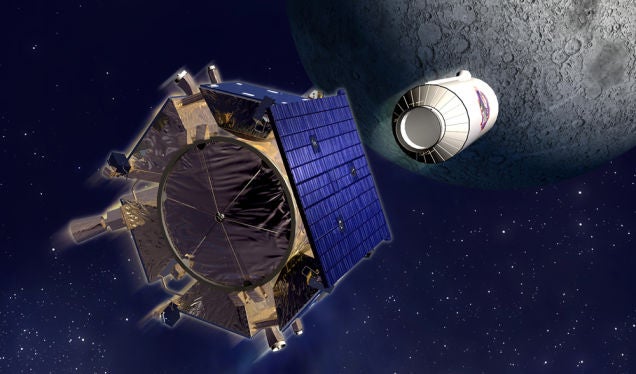
(NASA)
October 9, 2009 – The Centaur module of NASA’s Lunar Crater Observation and Sensing Satellite (LCROSS) crashes on the Moon. In an effort to determine whether or not the polar regions of the Moon contain subsurface frozen water, NASA launched LCROSS along wth the !!!error: Indecipherable SUB-paragraph formatting!!! on June 8, 2009 atop an !!!error: Indecipherable SUB-paragraph formatting!!! rocket. LCROSS consisted of a Shepherding Spacecraft that was attached to the spent Centaur upper stage of the Atlas rocket. Once over the southern pole of the moon, the rocket stage was launched into a shaded crater and followed down to the surface by the Shepherding Spacecraft with its sensors. The Atlas stage impacted the crater at approximately 5,600 mph and, while the debris plume was not as large as scientists hoped for, the trailing spacecraft was still able to confirm the presence of water on the Moon.
!!! UNKNOWN CONTENT TYPE !!!

(Cpl Phil Major ABIPP RAF)
October 9, 1987 – The first flight of the AgustaWestland AW101, a joint venture of the Italian company !!!error: Indecipherable SUB-paragraph formatting!!! and the British company !!!error: Indecipherable SUB-paragraph formatting!!! to produce a medium-lift naval helicopter. Known by Britain, Denmark, Norway and Portugal as the Merlin, the AW101 is powered by three !!!error: Indecipherable SUB-paragraph formatting!!! turboshaft engines and entered service in 1999 in the transport, anti-submarine warfare (ASW) and ship-based utility roles. It now serves with both military and civilian operators of 11 nations. In 1999, the US Navy and Marine Corps initiated the !!!error: Indecipherable SUB-paragraph formatting!!! program to find a replacement for the !!!error: Indecipherable SUB-paragraph formatting!!! used to transport the US president, and the AW101, designated the !!!error: Indecipherable SUB-paragraph formatting!!! , was considered in the competition before being canceled in 2009 after significant cost overruns.
!!! UNKNOWN CONTENT TYPE !!!
Connecting Flights
!!! UNKNOWN CONTENT TYPE !!!
!!! UNKNOWN CONTENT TYPE !!!
!!! UNKNOWN CONTENT TYPE !!!
!!! UNKNOWN CONTENT TYPE !!!
!!! UNKNOWN CONTENT TYPE !!!
If you enjoy these Aviation History posts, please let me know in the comments. And if you missed any of the past articles, you can find them all at
!!!error: Indecipherable SUB-paragraph formatting!!!
. You can also find more stories about aviation, aviators and airplane oddities at
!!!error: Indecipherable SUB-paragraph formatting!!!
.
!!! UNKNOWN CONTENT TYPE !!!
 Chariotoflove
> ttyymmnn
Chariotoflove
> ttyymmnn
10/09/2018 at 12:53 |
|
In 1997, the US bought Moldova’s stock of 21 MiG-29s to prevent their sale to Iran or other rogue states
Much less dangerous than the other way of getting hold of a MiG.
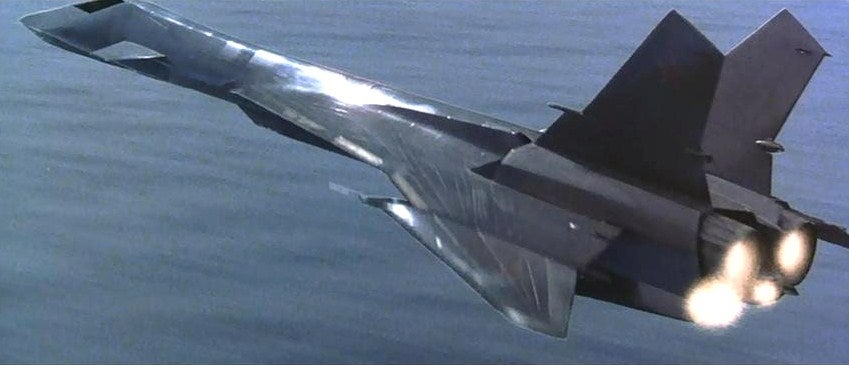
 ttyymmnn
> Chariotoflove
ttyymmnn
> Chariotoflove
10/09/2018 at 12:56 |
|
Significantly better book than movie. One summer I was visiting my grandparents and spent about every day lying on the sofa watching TV. Grandma kicked my lazy ass off the sofa (“divan”) and sent me to the local library. I checked out Firefox and read it in two days. I also checked out Gateway by Frederik Pohl. That book was a serious eye-opener for me, and I’ve been a Pohl fan every since.
 facw
> ttyymmnn
facw
> ttyymmnn
10/09/2018 at 12:59 |
|
It could not be shot down by the surface-to-air missiles of the day
Possibly we’ve had this discussion in a previous TDIAH, but an A-12 was hit by North Vietnamese missile (barely, there was nearly no damage to the aircraft), which suggests shooting one down, while certainly difficult, was not entirely impossible, and the SR-71 seems unlikely to have been significantly different. The fact that we did not (as far as I’ve been able to see anyway) fly the SR-71 over the Soviet Union directly seems to indicate that we didn’t consider it invincible either (though there may have been political concerns as well, overflights like the U-2 previously made might just have been too provocative in the SR-71 era).
 Just Jeepin'
> ttyymmnn
Just Jeepin'
> ttyymmnn
10/09/2018 at 13:00 |
|
Missing the conclusion of this sentence:
In the 1960s, the Air Force began its F-X program to develop a new air superiority fighter, a competition which brought about the superb McDonnell Douglas F-15 Eagle , which was ordered into production in 1969 and took its .
 Chariotoflove
> ttyymmnn
Chariotoflove
> ttyymmnn
10/09/2018 at 13:01 |
|
Books are usually better. On exception comes to mind: The Hunt for Red October . Most people I know say it’s different, but just as good.
I want my daughter to discover reading for fun. I think sometimes there is still hope. The wife and I are the type to read everything we can get our hands on twice.
 ttyymmnn
> facw
ttyymmnn
> facw
10/09/2018 at 13:04 |
|
Good points, all. Thanks.
 ttyymmnn
> Just Jeepin'
ttyymmnn
> Just Jeepin'
10/09/2018 at 13:05 |
|
Damn. I remember rewriting that section, now I don’t remember what I meant to say. Thanks for pointing that out.
 ttyymmnn
> Just Jeepin'
ttyymmnn
> Just Jeepin'
10/09/2018 at 13:08 |
|
Here you go:
In the 1960s, the Air Force began its F-X program to develop a new air superiority fighter, a competition which brought about the superb McDonnell Douglas F-15 Eagle , which was awarded a production contract in 1969 based on a technical proposal and took its maiden flight in July 1972.
This was actually now further edited. It’s nice to know somebody is actually reading these! Thanks again.
 ttyymmnn
> Chariotoflove
ttyymmnn
> Chariotoflove
10/09/2018 at 13:11 |
|
I saw Jurassic Park, then read the book. I’m glad I did it that way, because then I wasn’t sitting there critiquing the movie on how it was different from the book. I could enjoy each on its own merits. In our search for scary movies, we just watched The Shining . I started doing some reading about the movie and book, and the book is, apparently, quite different from the film. So I have started in on the book. I’ve actually never ready anything by King before.
 Just Jeepin'
> ttyymmnn
Just Jeepin'
> ttyymmnn
10/09/2018 at 13:16 |
|
Glad to be of service.
 Chariotoflove
> ttyymmnn
Chariotoflove
> ttyymmnn
10/09/2018 at 13:18 |
|
Jurassic Park is a good movie for visual reasons. For story reasons, I prefer the book. But it’s one of those pairs where it’s good to do both.
 ttyymmnn
> Just Jeepin'
ttyymmnn
> Just Jeepin'
10/09/2018 at 13:19 |
|
A community of proofreaders.
 Just Jeepin'
> ttyymmnn
Just Jeepin'
> ttyymmnn
10/09/2018 at 13:23 |
|
We prefer the collective noun “nag”.
 ttyymmnn
> Chariotoflove
ttyymmnn
> Chariotoflove
10/09/2018 at 13:24 |
|
Yeah, the book kind of rules out a sequel (no spoilers!).
 Turbineguy: Nom de Zoom
> Chariotoflove
Turbineguy: Nom de Zoom
> Chariotoflove
10/09/2018 at 13:24 |
|
The catch is in order to fly that jet you must
think in Russian.
(
d
r
a
m
a
t
i
c
)
T
h
i
n
k
.
.
i
n
R
u
s
s
i
a
n
 facw
> ttyymmnn
facw
> ttyymmnn
10/09/2018 at 13:25 |
|
Japan lost 18 F-2s in the 2011 tsunami:
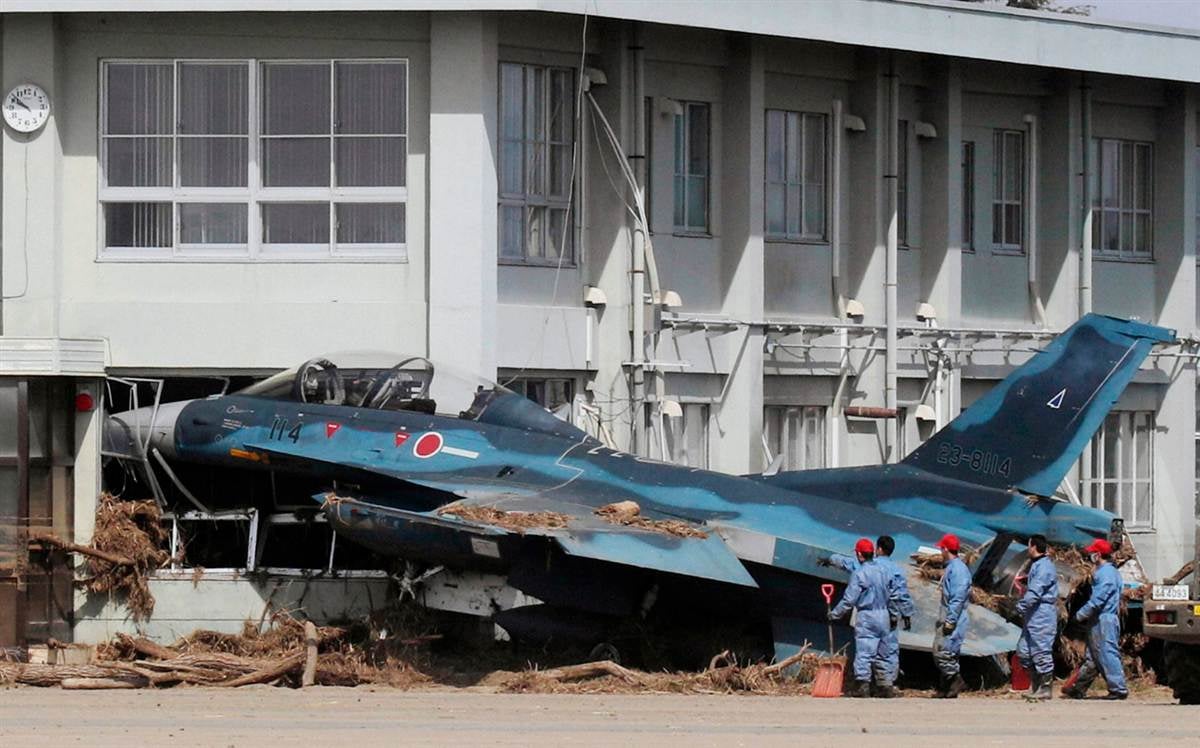
Last I saw, they decided five were beyond repair but they were going to attempt to resurrect the other 13 (at huge expense). I can’t imagine how much work it takes repair an aircraft that had been both subjected to significant physical forces, and inundated with seawater. It seems like every component would be untrustworthy and need to be disassembled an re-validated at the very least.
 Chariotoflove
> ttyymmnn
Chariotoflove
> ttyymmnn
10/09/2018 at 13:25 |
|
As it should. Some things need to just end.
 Chariotoflove
> Turbineguy: Nom de Zoom
Chariotoflove
> Turbineguy: Nom de Zoom
10/09/2018 at 13:27 |
|
Da , comrade. Already there.

 RamblinRover Luxury-Yacht
> ttyymmnn
RamblinRover Luxury-Yacht
> ttyymmnn
10/09/2018 at 13:27 |
|
some consider his intubed propeller, which is essentially a ducted fan , as the precursor to the modern turbofan engine.
One could also, being cheeky, refer to his tail design as a precursor to modern thrust-vectoring.
 ttyymmnn
> facw
ttyymmnn
> facw
10/09/2018 at 13:29 |
|
Well, they’re not making them any more, so I guess they don’t really have much of a choice.
 ttyymmnn
> RamblinRover Luxury-Yacht
ttyymmnn
> RamblinRover Luxury-Yacht
10/09/2018 at 13:30 |
|
Yeah, I suppose you could.
 Turbineguy: Nom de Zoom
> ttyymmnn
Turbineguy: Nom de Zoom
> ttyymmnn
10/09/2018 at 13:33 |
|
Impressive. Lots of great stuff here.
K
i
n
d
a
c
u
r
i
o
u
s
a
b
o
u
t
t
h
e
S
e
a
m
e
w; this was in production simultaneously with
V
o
u
g
h
t’
s
OS2u
K
i
n
g
f
i
s
h
e
r
?
How many single-engine floatplanes did the USN nee
d
?
 Turbineguy: Nom de Zoom
> Chariotoflove
Turbineguy: Nom de Zoom
> Chariotoflove
10/09/2018 at 13:35 |
|
W
e
l
l
t
h
a
t
b
e
a
t
s
d
e
i
c
i
n
g
f
l
u
i
d
a
n
y
d
a
y
.
.
B
o
t
t
o
m
s
u
p
!
 ttyymmnn
> Turbineguy: Nom de Zoom
ttyymmnn
> Turbineguy: Nom de Zoom
10/09/2018 at 13:35 |
|
Apparently, they thought they needed a lot! The Pacific Ocean is a big place.
 Turbineguy: Nom de Zoom
> ttyymmnn
Turbineguy: Nom de Zoom
> ttyymmnn
10/09/2018 at 13:36 |
|
T
h
e
K
i
n
g
f
i
s
h
e
r
w
a
s
t
h
e
s
t
d
c
a
t
a
p
u
l
t
-
l
a
u
n
c
h
e
d
p
l
a
n
e
o
n
B
B
s
a
n
d
C
A
s
,
b
u
t
n
o
t
s
u
r
e
w
h
a
t
t
h
e
m
i
s
s
i
o
n
w
a
s
f
o
r
t
h
e
S
e
a
m
e
w
.
 ttyymmnn
> Turbineguy: Nom de Zoom
ttyymmnn
> Turbineguy: Nom de Zoom
10/09/2018 at 13:39 |
|
It was intended as a floatplane scout. But even though the Kingfisher was older, it was a better plane.
 user314
> ttyymmnn
user314
> ttyymmnn
10/09/2018 at 14:15 |
|
I can never not hear the acronym (or is it an initialism?) TsAGI in Sir Peter Ustinov’s voice .
 user314
> facw
user314
> facw
10/09/2018 at 14:19 |
|
If anything, the SR is slightly heavier and slower than an A-12. The flip side would be if it carried more ECM/ESM gear (which IIRC it did), making a lock-on that much more difficult.
 ttyymmnn
> user314
ttyymmnn
> user314
10/09/2018 at 14:46 |
|
Absolutely. I miss that show. They rebooted Wings, but it was terrible.
 user314
> facw
user314
> facw
10/09/2018 at 15:18 |
|
You’re deep into Ship of Theseus territory there. Still, this is still cheaper than trying to get the lines back open, even if they wanted to. Per the Wiki, refurbing those 13 aircraft is running something like ¥ 80 billion, roughly the cost of 7 new aircraft.